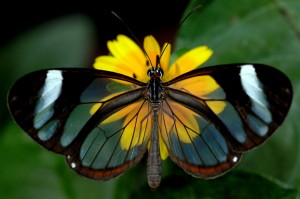Last blog I mentioned some specifics about horse shoe crab mating behavior and decided that I was going to dedicate this blog to describing mating systems. Mating systems are very interesting and important because they are behavioral representations of the result of natural selection on mate choice and they affect the reproductive success of all individuals. Every animal wants to maximize their reproductive success, and to do this they must obtain a partner to mate with successfully. There are 4 main mating systems: monogamy, polygamy (which includes polygyny and polyandry), and promiscuity.
Monogamy is when one male and one female pair bond. What we think of as true monogamy (one male and female pair bond for life) is not as common as scientists once thought, but there are still examples, such as the Bald Eagle (Haliaeetus leucocephalus), who only forms a new pair bond if one partner dies.

Scientists divide polygamy into two different categories: polygyny and polyandry. Polygyny is when there is an association between one male and multiple females. One example of this is yellow-bellied marmots (Marmota flaviventris). They reflect a specific type of polygyny referred to as a harem-polygynous system where one male will live with multiple females and reproduces with several of them at a time.

Polyandry is when there is an association between one female and multiple males. Honey bee species are a good example because queens fly out of the hive into swarms of drones, mate with many of these drones in midair. The queen will then use sperm from as many as a dozen males during her lifetime to fertilize eggs.

Promiscuity is when there are no pair bonds and males and females mate randomly. One example of this is Bonobos, who never form pair bonds, but instead engage with many partners throughout their life. For bonobos, sex is used not just for reproduction, but also for conflict resolution and just greeting each other.

An aspect of mating systems to keep in mind is that, although there can be pair bonds where both sexes are monogamous, polygamous or promiscuous, there are many more examples of mating systems/behaviors where one sex exhibits one type of mating system, and the other sex exhibits another type of mating system.
One example is the dark-eyed junco, whose male is monogamous and female polyandrous. Although a female may pair with one male to raise young, the female will mate with other males and produce mixed-paternity clutches of eggs. It has actually been determined that the offspring produced from these mating with other males (known as extra-pair mates) are more likely to survive to reproduce.

There are many more examples for each one of these mating systems and also variations of each one. Scientists are also learning more about each type of mating system every day. Especially with the increased cost effectiveness of performing molecular techniques, it is becoming easier to determine if a species is monogamous or not by testing paternity. Many bird species, for example, that were thought to be monogamous are really not, such as the waved albatross (Phoebastria irrorata).

Waved_Albatross_pair.jpg
There is still much to learn about mating systems and how they reflect natural selection for particular species. But from what we know, what are some evolutionary advantages for some mating systems for each sex? Stay tuned, and you will find out next blogpost!
______________________________________________________________________________________________________
Sources:
General:
Alcock, John. 2013. Animal Behavior: Tenth edition.
https://www.nature.com/scitable/knowledge/library/mating-systems-in-sexual-animals-83033427
Bald Eagles:
https://www.audubon.org/news/till-death-do-us-part-birds-mate-life
Yellow-bellied marmots:
https://www.conservenature.org/learn_about_wildlife/rocky_mountains/yellow_bellied_marmot.htm
Honey bees:
Tarpy, D.R., and D.I. Nielsen. 2002. Sampling error, effective paternity, and estimating the genetic structure of honey bee colonies (Hymenoptera: Apidae). Ann. Entomol. Soc. Am. 95: 513-528.
Bonobos:
https://www.huffingtonpost.com/2010/02/13/the-most-promiscuous-anim_n_450017.html
https://greatergood.berkeley.edu/article/item/what_bonobos_tell_us_about_our_parents
Dark-eyed junco:
Gerlach, N.M., J.W. McGlothlin, P.G. Parker, and E.D. Ketterson. 2012. Promiscuous mating produces offspring with higher lifetime fitness. Proc. R. Soc. B. 279: 860-866.
Waved Albatrosses:
https://www.nwf.org/News-and-Magazines/National-Wildlife/Birds/Archives/2001/Faithful-or-Not.aspx
Huyvaert, K.P., and P.G. Parker. 2010. Extra-pair paternity in waved albatrosses: genetic relationships among females, social mates and genetic sires. Behavior 147: 1591-1613.

